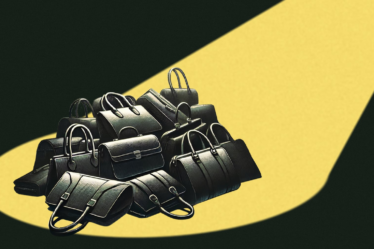
BoF’s The Best Fashion Schools in the World assesses top undergraduate and graduate fashion design, fashion art direction and communications, and fashion business and management programmes. The assessment examines on 30 different data points gathered from 66 institutions; surveys completed by 13,500 students and alumni; feedback from 115 leading HR and industry professionals; global fashion school faculty; and input from the BoF Education Council, a committee comprised of 12 global experts from fashion education and industry.
Members of the BoF Education Council are:
- Jane Rapley (Council Chair) – Professor Emerita, Central Saint Martins
- Bandana Tewari – Contributor, The Business of Fashion Sustainability Activist
- Christine Tsui – Fashion Business Consultant & Columnist
- Emma Davidson – Owner & Managing Director, DENZA
- Floriane de Saint Pierre – Founder, Floriane de Saint-Pierre et Associes
- Karen Harvey – Chief Executive, Karen Harvey Consulting Group; Founder & CEO Fashion Tech Forum and INDX
- Linda Loppa – Honorary Doctor, UAL; Consultant, Linda Loppa Factory
- Pamela Golbin – Former Chief Curator of Fashion and Textiles, Musée des Arts Décoratifs
- Pascal Morand – Executive President, Fédération de la Haute Couture et de la Mode
- Robyn Healy – Chair, International Foundation of Fashion Technology Institutes (IFFTI); Dean, School of Fashion and Textiles, RMIT University
- Sara Kozlowski – Director of Education & Professional Development, Council of Fashion Designers of America
- Sara Sozzani Maino – Deputy Director Special Projects & Head of Vogue Talents, Vogue Italia
In accordance with feedback from educators and the BoF Education Council, the 2019 assessment does away with the numerical ranking system used in previous years, and instead highlights top programmes and their areas of excellence.
BoF’s The Best Fashion Schools in the World assessment is based on three major indicators of quality:
- Global Influence– We considered the global reputation and influence of a school by surveying academics around the world, assessing the selectivity of a school in admitting applicants and the enrolment rates of admitted applicants.
- Learning Experience – We evaluated students’ experience while in school by surveying their satisfaction with the calibre of their peers, the quality of teaching and the resources available at the institution, and surveying academics around the world.
- Long-Term Value – We assessed the students’ preparedness for the real world, based on student progression rates provided by the schools, assessing student satisfaction around employment, career preparedness and accessibility of alumni.
We considered a programme’s performance in each of these three major indicators of quality. Programmes scoring at or above a determined relative cut-off in any of the three indices are awarded a Badge of Excellence indicating top performance in that index. In addition, an overall BoF Score was given to each institution’s undergraduate or graduate programme based on a sum-weighted score across the three indices.
All programmes featured have earned at least one Badge of Excellence, indicating top performance in one of the key indicators. However, schools could have received up to four Badges of Excellence, should they have performed at or above the determined cut-off in the three key indices, and were a top performer overall. Within each discipline, schools are listed alphabetically, and their earned badges are displayed adjacent to their names.
We determined appropriate cut-offs for each discipline based on the total number of schools assessed and on school performance patterns that cause a notable divergence in scores. For example, the number of schools offering undergraduate fashion design programmes far exceeds the number of schools offering undergraduate art direction & communications programmes, so a larger cut-off in fashion design was deemed appropriate. These cut-offs are relative in that they recognise the top performers in each index as compared to their peers, rather than those that achieve above a certain absolute score. After calculating each school’s scores, we identified the schools that scored at or above the cut-off in the indices and overall. These institutions were then awarded the applicable Badges of Excellence.
Relative cut-offs for each discipline are as follows:
- Undergraduate Fashion Design: Top 25 Schools in each index or overall (i.e., schools that scored in the top 25 in Global Influence, Learning Experience, Long-Term Value, and/or Overall)
- Undergraduate Art Direction & Communications: Top 5
- Undergraduate Fashion Business: Top 10
- Graduate Fashion Design: Top 10
- Graduate Art Direction & Communications: Top 5
- Graduate Fashion Business: Top 5
Where data provided from students or administrations was incomplete or insufficient, we preferred not to rank a school/programme as opposed to providing an inaccurate assessment. As such, some reputable programmes may not appear in our ranking; these programmes are listed at the end of each discipline’s page.
Disclosure: The Business of Fashion (“BoF”) accepts advertising arrangements from a range of partners including fashion schools, some of which may appear in The Best Fashion Schools in the World 2019 assessment (the “Assessment”). Such advertising arrangements and the Assessment are handled by separate parts of the business in order to ensure that BoF’s continued commitment to editorial integrity and independence is maintained, and any advertising arrangements between BoF and a fashion school shall have no impact on the methodology or outcome of the Assessment.
Performance Indicator Weights & Definitions
Global Influence (20%)
- We considered the global reputation and influence of a school by surveying academics around the world, assessing the selectivity of a school in admitting applicants and the enrolment rates of admitted applicants.
Reputation (10%)
- Peer review scores based on survey of academics around the world, who nominated other schools that excel in their educational offerings
Selectivity (10%)
- Acceptance rate
- Enrollment rate (Yield)
Learning Experience (40%)
- We evaluated current and former students’ experience by surveying their satisfaction with the calibre of fellow students, the quality of teaching, and the resources available at the institution. We also included peer review survey results from academics around the world.
Student Body (10%)
- Student diversity
- International enrolment
- Student quality satisfaction
Resources (10%)
- Library/study materials satisfaction
- Workrooms satisfaction
- Campus/buildings satisfaction
- Tools & technology satisfaction
Teaching (15%)
- Overall quality of teaching satisfaction
- Breadth of curriculum and knowledge transfer satisfaction
- Organisation and structure of the programme satisfaction
- Contact hours with educators satisfaction
- Educator feedback on course work satisfaction
- Availability of additional academic/technical support satisfaction
- Value add from course projects in collaboration with industry satisfaction
- Availability and quality of pastoral/personal support satisfaction
Peer Review (5%)
- Peer review scores based on survey of academics around the world, who nominated other schools that excel in their educational offerings
Long-term Value (40%)
- We assessed the students’ preparedness for the real world, surveying fashion industry HR professionals, and assessing programme progression rates provided by the school and student satisfaction about employment opportunities, career preparedness and accessibility of alumni.
Careers (15%)
- Progression rate
- Career Services satisfaction
- Quality of recruiting companies satisfaction
- Networking events / career fairs satisfaction
Preparedness (20%)
- % of alumni that obtain jobs within 12 months (3.3%)
- Access to internships & work placements satisfaction (3.3%)
- Overall expectations met satisfaction (3.3%)
- Employability as measured by global HR professional scores (10%)
Alumni Network (5%)
- Level of alumni accessibility satisfaction
- Global reach of alumni satisfaction
- Alumni activity with peers (networking, events) satisfaction
- Level of alumni engagement with school
All indicators were selected to balance statistical rigour and relevance for the ranking, ensuring each added value and could help distinguish universities from each other and accurately represent the nature of the fashion industry.
Global Influence (20% overall weighting) – To what degree has an institution built a reputation that students and industry insiders respect and trust?
- Reputation (10%) Composite score based on the total number of times the school is nominated by a global pool of fashion school academics for excelling in their educational offerings
- Selectivity (10%) % Acceptance rate: proportion of admitted students versus applicants to indicate the selectivity of programme as a measure of reputation % Yield: proportion of admitted applicants who decided to enrol in the school as a measure of desirability
Learning Experience (40% overall weighting) – To what degree is an institution able to provide students with the resources and learning environment conducive to a rewarding fashion education?
- Student Body (10%) Student international diversity score: numerical average value applied to each school’s student satisfaction with the international diversity on a scale of 1-5 (from very dissatisfied to extremely satisfied) International enrolment: proportion of international students in class as an indication of global reach and perspective Overall student quality score: numerical average value applied to student satisfaction with overall student body on a scale of 1-5 (from very dissatisfied to extremely satisfied)
- Resources (10%) A numerical average value applied to student satisfaction with all resources (library/study materials, workrooms, campus/buildings, tools and technology) on a scale of 1-5 (from very dissatisfied to extremely satisfied)
- Teaching (15%) Numerical average value applied to student satisfaction with curriculum and teaching (overall quality of teaching, breadth of curriculum and knowledge transfer, organisation and structure of the programme, contact hours with educators, educator feedback on course work, availability of additional academic/technical support, value add from course projects in collaboration with industry, availability and quality of pastoral/personal support) on a scale of 1-5 (from very dissatisfied to extremely satisfied)
- Peer Review (5%) Composite score based on the total number of times the school is nominated by a global pool of fashion school academics for excelling in their educational offerings
Long-term Value (40% overall weighting) – To what degree is an institution able to prepare and support students for a successful, long-term career in the fashion industry?
- Careers (15%) Progression rate: proportion of students enrolled in year 1 who progress to their second year; for one-year graduate programmes, this is the proportion of students who successfully complete the programme Weighted careers satisfaction score: numerical average value applied to student satisfaction with career services, quality of recruiting companies, and networking events/career fairs on a scale of 1-5 (from very dissatisfied to extremely satisfied)
- Preparedness (20%) Job within 12 months: percent of alumni that obtain a job within 6 months of graduation from institution Access to internships & work placements: numerical average value applied to student and alumni satisfaction with their school’s ability to support them in obtaining internships & work placements from 1-5 (from very dissatisfied to extremely satisfied) Overall expectations met: numerical average value applied to student and alumni satisfaction with their programme’s ability to meet their expectations for pursuing a fashion education on a scale of 1-5 (from very dissatisfied to extremely satisfied) Employability score: composite score based on the total number of times the school is nominated by a global pool of fashion HR and industry professionals for producing quality recruits. BoF surveyed HR and industry professionals from the BoF Professional subscriber base, as well as professional contacts provided by participating schools (schools were invited to list professionals, with their permission, from organisations that actively recruit their students)
- Alumni Network (5%) Numerical average value applied to satisfaction with alumni network on a scale of 1-5 (from very dissatisfied to extremely satisfied) based on accessibility of alumni, global reach, alumni activity with peers, and level of engagement with school
Final Scores & Badges of Excellence
An institution was scored in each of the assessment’s key indicators: Global Influence, Learning Experience and Long-Term Value. An Overall BoF Score was then awarded to each institution based on the sum-weighted score across all three key indices.
All programmes featured have been awarded at least one Badge of Excellence indicating top performance in at least one of the key indicators. Schools may have received up to four Badges of Excellence, should they have performed at or above the determined cut-off in the three major indices and were a top performer Overall.
The process used to compute the BoF Best Fashion Schools in the World scores was as follows:
- Aggregate responses from all surveys/questionnaires and review data, ensuring the number of responses reflects a normal distribution, and data meets the required level of completeness and accuracy (adjusting and/or excluding outliers and inaccurate values)
- Process each indicator individually, producing a standardised score (t-score) for each indicator, except reputation, per school to evaluate the distance from the average using standard deviations and allowing each score to be compared against others in a statistically sound manner
- Assign weights to each indicator to ensure that no indicator and category (influence, experience, and value) could have a disproportionate positive or negative impact on a particular school’s overall score
- Calculate an overall weighted t-score by applying the weights to each standardised indicator score and assigning a new standardised score (total t-score / number of indicators) – in the case of missing data, the t-scores corresponding to the 25thpercentile was assigned
- Add academic reputation score and employability score based on total number of mentions
- Standardise reputation and employability score per school based on 25% total weight value to school(s) with fewest mentions and 100% of total weight value assigned to school(s) with the most mentions
- Calculate the Overall, Influence, Experience, and Value scores, and create a numerical ranking for the Overall score and the three indicators
- Determine an appropriate cut-off and identify the schools/programmes receiving Badges of Excellence
Data & Inputs
The rankings are the result of a rigorous analytical exercise, incorporating multiple data sources, including direct participation from fashions schools, students and alumni:
- Fashion Schools Questionnaire: detailed survey data and information collected directly from 66 fashion schools in 23 countries, across 30 data points
- Students and Alumni Survey: surveys completed by over 13,000 current students and recent alumni from fashion schools evaluating student satisfaction across 24 data points
- Global Reputation Survey: survey completed by academics from participating fashion schools from around the world
- Global Graduate Employability Survey: survey completed by 115 HR professionals from around the world
All data are specific to the programme-level. In the Fashion Schools Questionnaire, schools provided quantitative data specific to their undergraduate and graduate fashion design, art direction and communications, and business programmes (rather than providing data that applies to the school as a whole). Likewise, Students and Alumni, Global Reputation, and Global Graduate Employability surveys asked respondents about their views on a school’s programme.
Data were then used to analyse only the applicable programmes. For example, survey responses from students and alumni graduating from a school’s undergraduate fashion business programme were only used to assess that school’s undergraduate fashion business programme. We have noted the few cases where data points reflected averages across disciplines on the programme’s feature.



